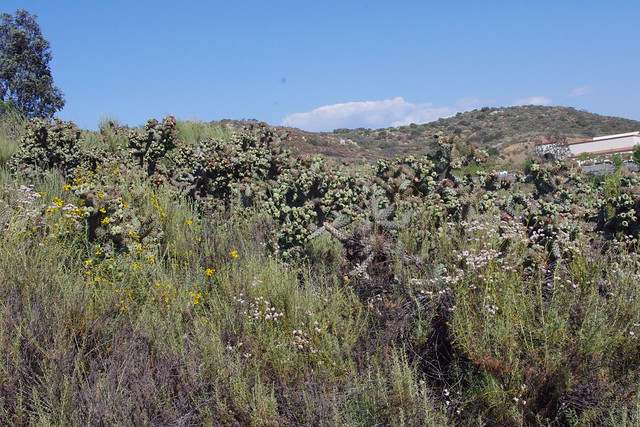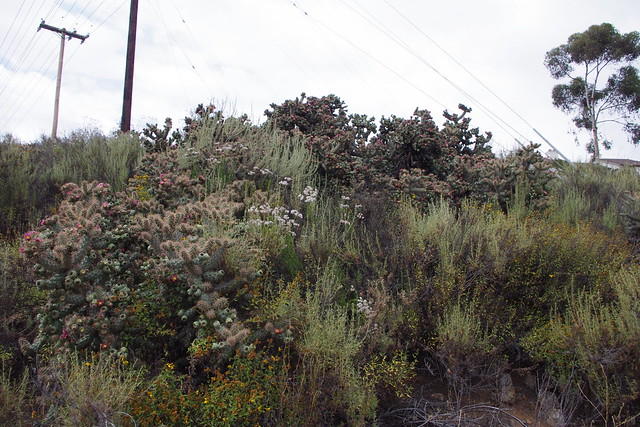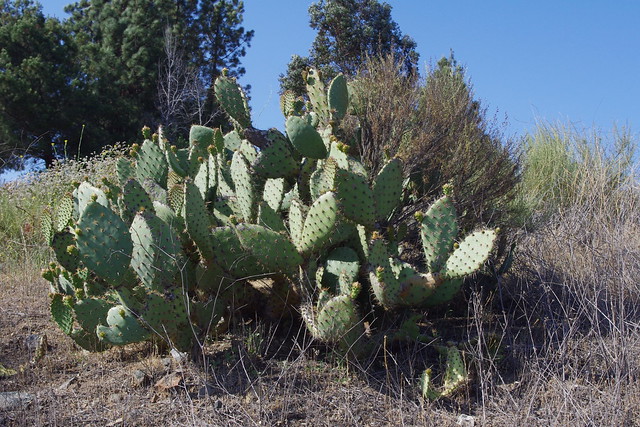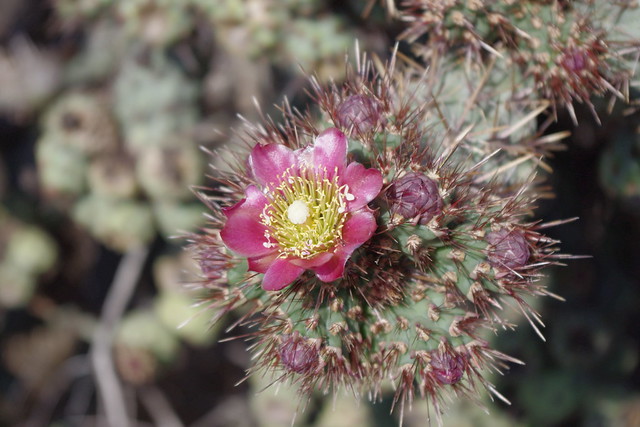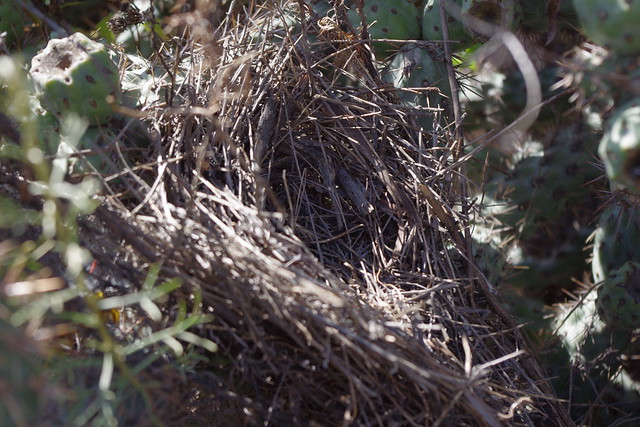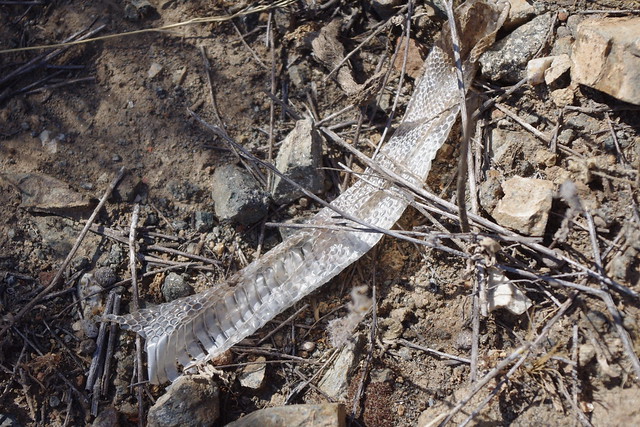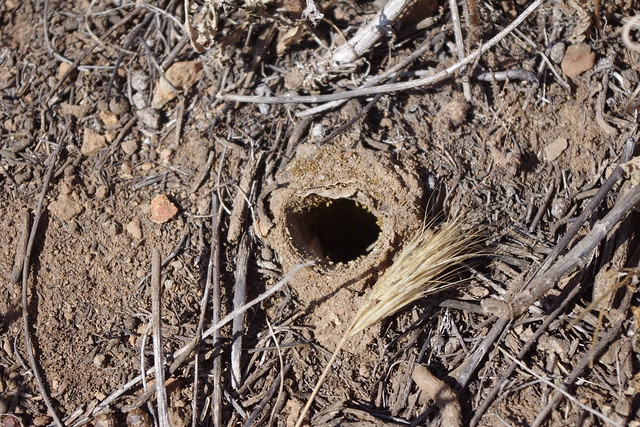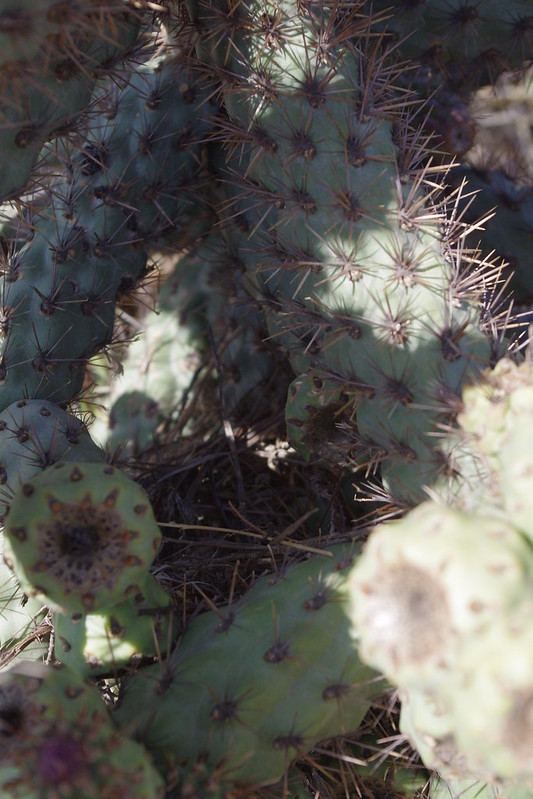. . . . . and the ongoing ignorant behavior & actions of Human Beings that sparks these reoccurring disasters !
 |
| Image - nbcsandiego.com (May 2013) |
"Someone using a weed trimmer sparked a small brush fire in the Alpine area Thursday, the same day the region was on alert with a red flag warning."
~~~~~~~~~~~~~~~~~~~~~~~~~~~~~~~~~~~~~~~~~~~~

Let's be totally honest here about the weed trimmer incident in Alpine California, this was NOT your typical fishing line fed weed trimmer, this was a Brush Cutter which is uses steel blades for cutter tough dense woody brush trunks and branches like those of the chaparral plant community. These blades are used on the same weed trimming instrument which are normally used on dry grasses and other non-native invasive annual plants that have overwhelmed Southern California as a result of bad management practices of humans. But the fire started on Thursday (yesterday) in Alpine CA was NOT a mere weed trimmer. As earlier reported, this was a Brush Cutter which will often create a spark when it comes into contact with rocks in the rocky decomposed granite soils of the So-California backcountry. The astonishing thing & question is, "Why would anyone be brush clearing this time of year and during a 'RED DAY' heat alert ?" This is more common than most people think. This actually is the very cause of fires especially in the Southern California rural areas, although you may not always here of these being reported. But in today's MegaFire phobia hysteria and Media feeding frenzy for anything to do with potential disaster, such reports may become more common, but the events have always been around. With the terrible science that has been fostering debate about Brush Management, one wonders why the News Headline doesn't read, "In what appears to be a defensive measure to save it's own life, an old growth Ceanothus deliberately started a fire after being threaten with a Bush Wacker." Okay, I know it sounds stupid, but given usual asinine version of scientific chaparral management programs being pimped as great science, this absurdity is perfect for illustrating Scientific Absurdity. But let's move on from here. Last week I drove up to Alpine CA to photograph the landscape between Alpine and the Descanso old hwy 80 exist off Interstate 8. I had seen some interesting things on my way back from Ocotillo to El Cajon almost a month ago and wanting to recapture them here.
 This is a look from the shoulder on Interstate 8 west of the Descanso Hwy 79 exit. The view is looking north towards Old U.S. Hwy 80 which is now abandoned. Several Oak, Sycamore and Cottonwood skeletons are visible even long after the 2003 Cedar fire. Lack of good healthy normal rainfall was never a problem in the past for recovery, but the idiocy in human management of this planet is calling into question survival for many things. Unfortunately for the Ideologues out there on both sides, this doesn't have a thing to do with a bunch of stupid politics. It's about doing the right thing.
This is a look from the shoulder on Interstate 8 west of the Descanso Hwy 79 exit. The view is looking north towards Old U.S. Hwy 80 which is now abandoned. Several Oak, Sycamore and Cottonwood skeletons are visible even long after the 2003 Cedar fire. Lack of good healthy normal rainfall was never a problem in the past for recovery, but the idiocy in human management of this planet is calling into question survival for many things. Unfortunately for the Ideologues out there on both sides, this doesn't have a thing to do with a bunch of stupid politics. It's about doing the right thing.


Once again, a view of a chaparral plant community and the Woodland Islands & riparian ribbons struggling to make a come back almost 10 years after the 2003 Cedar Fire. The island woodland pockets (Oaks, Big Cone Doug Fir etc) and large ribbons of riparian plant life within the chaparral plant community are having a harder time of recovery as are many chaparral plants which normally rocket back after fire just after a couple of years. This was actually sad to watch and view, knowing what is once was and how beautiful and pristine it once appeared. But unfortunately this is becoming the same exact scenario all across the southwestern United States.In chaparral country, there are generally numerous pockets of woodland island environments which are separate and distinct from the surrounding chaparral plants. They are pockets of habitat for all manner of larger diverse wildlife and use to be more common. Now with the common mega-fires, even these old growth pockets of woodlands are disappearing fast. As time goes on, the generations of people who remember these special places will also disappear and the knowledge & experiences they have will go with them. The younger generations for the most part will have no clue as to what once was. Indeed, they are already disconnected from the real outdoor life by means of being reconnected to an artificial one indoors by way of the Electronic Addiction age. Below is an example of a large Chaparral skeleton that would have been erased by the normal rapid growth of the newer chaparral vegetation so common just a couple of decades ago.
 |
| photo: Mine! |
This is the burned out woody skeleton of Laurel Sumac (Rhus laurina) which is definitely struggling to come back 10 years after 2003 Cedar Fire. In the old days decades ago, such a new growth come back after only a couple of years would more than likely covered the entire skeleton of dead burned branches. The resulting extremely low rainfall since that fire exacerbated by global climate disruption no doubt is a contributing factor. There was really no way of preventing that disastrous event.
This is an example of the beautiful "Flannel Bush", so named for it's fuzzy velvety hairs which cover it's twigs and small branches. I have to assume being this close to the Mexican Border that this must be Mexican Flannel Bush (Fremontodendron mexicana) which is associated with chaparral and Tecate Cypress forests in San Diego County. When I first drove past this particular bush on my way back from Ocotillo on April 7th, this bush was in full bloom. Now just three weeks late only a few flowers remain.
 |
| photo: Mine! |
These are an example of the Mexican Flannel Bush flowers. Now there are only a handful on this particular shrub to be found. The kool thing about these flowers is they often appear to be made of a thick yellow orange wax, even up close.
 |
| photo: Mine! |
Now only the seed pods from which will mature and hold several medium sized pea shaped seeds with a hard black shiny coats are all that remain on this bush along the Interstate 8 freeway.
 |
| photo: Mine! |
Just by way of reference in other varieties of Fremontia, this photo here is from 2011 at my old property in Anza California. This is Fremontodendron "San Gabriel" which I purchased from "Tree of Life Native Plant Nursery" in San Juan Capistrano. This form grows taller and more tree-like than the mounding shrub appearance of the Mexican Flannel Bush.
 |
| photo: Mine! |
For me on this 2011 visit in the summer of that year was the fact that this 'San Gabriel' Flannel Bush had reseeded it self on my old property after I sold the place. Above is an example of the cultivator Flannel Bush "San Gabriel" flowers.
 |
| photo: Mine! |
This is an abundant example along Interstate 8 of a chaparral plant called Bush Poppy (Dendromecon rigida) which was everywhere on these interior south facing slopes. In the San Jacinto mountains, you will see many of these as you drive west on Highway 74 leaving Mountain Center on your way to Hemet California.
 |
| photo: Mine! |
This is a close up shot of the flowers from the Bush Poppy. There is a coastal form and even native to the coastal islands off Southern California that I believe is called Island Bush Poppy. It's foliage is larger and lusher and flowers bigger as I remember.This was pretty much what I had to share. Things haven't necessarily progressed in a positive way in the wilds after the 2000 decade fire events and from what we are seeing here this year, there are more to come. Keep in mind that human idiocy and ignorance are what are causing these fire events in more ways than you can imagine. Everyone has to take the logical precautions, but not to the point of harming the plant community around you. Before I leave, I have some good examples of what people should not do around their rural properties. In most cases they have made the situation worse. There were other photos i wanted to take in Alpine town community itself where land owners have trimmed up Sugarbush (Rhus ovata) and Scrub Oaks into small picturesque multi-trunked trees, but there was nowhere really to pull off the small neighbourhood roads to take photos without looking like some suspicious creep if you know what I mean.

